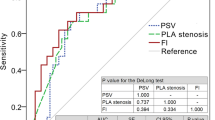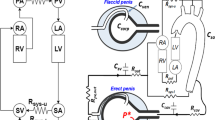Abstract
RigiScan has been the most widely utilized device for measuring erectile rigidity. However, the use of the RigiScan in the evaluation of erectile dysfunction has questionable because the RigiScan device does not directly determine axial rigidity. The aim of this study is to clarify that radial rigidity measured by RigiScan reflects the intracorporeal pressure and erectile capability efficiently. From January 1998 to May 1999, a total of 23 patients with erectile dysfunction were involved in the study. They were evaluated by RigiScan and duplex ultrasonography after intracorporeal injection of prostaglandin E1. We investigated the relationship between radial rigidity and the resistance index. The results of radial rigidity were also compared with that of the degree of erection. For the entire group, significant correlations were found between radial rigidity and the resistance index (r=0.680, P<0.001 for tip rigidity; r=0.703, P<0.001 for base rigidity). In addition, for 12 patients whose tip rigidity exceeded 60% and for 10 whose base rigidity exceeded 60%, the correlations between radial rigidity and the resistance index remained (r=0.659, P=0.020 for tip rigidity; r=0.759, P=0.011 for base rigidity). Based on the response determined by patients, radial rigidity represented the degree of erection efficiently.
Our findings suggest that RigiScan is a useful diagnostic tool. Radial rigidity represents the intracorporeal pressure efficiently and has an acceptable role in the evaluation of erectile dysfunction.
This is a preview of subscription content, access via your institution
Access options
Subscribe to this journal
Receive 8 print issues and online access
$259.00 per year
only $32.38 per issue
Buy this article
- Purchase on Springer Link
- Instant access to full article PDF
Prices may be subject to local taxes which are calculated during checkout
Similar content being viewed by others
References
Shabsigh R et al.. Intracavernous alprostadil alfadex is more efficacious, better tolerated and preferred over intraurethral alprostadil plus optional actis: a comparative, randomized, crossover, multicenter study. Urology 2000 55, 109–113
Weiske WH . Invasive diagnostic and therapy—are they still reasonable in the age of sildenafil? Andrologia 1999 31, (Suppl 1): 95–97
Allen RP, Smolev JK, Engel RM, Brendler CB . Comparison of Rigiscan and formal nocturnal penile tumescence testing in the evaluation of erectile rigidity. J Urol 1993 149, 1265–1268
Udelson D et al.. Axial penile buckling vs Rigiscan™ radial rigidity as a function of intracavernosal pressure: why Rigiscan does not predict functional erections in individual patients. Int J Impot Res 1999 11, 327–337
Fronek A, Coel M, Bernstein EF . Qualtitative ultrasonographic studies of lower extremity flow velocities in health and disease. Circulation 1976 53, 957–960
Meuleman EJ et al.. Assessment of penile blood flow by duplex ultrasonography in 44 men with normal erectile potency in different phases of erection. J Urol 1992 147, 51–56
de Meyer JM, Thibo P . The resistance index represents the corporeal pressure and not the cavernous wall resistance. J Urol 1997 157, 830–832
Puech-Leao P, Chao S, Glina S, Reichelt AC . Gravity cavernosometry—a simple diagnostic test for cavernal incompetence. Br J Urol 1990 65, 391–394
Saenz de Tejada I et al.. Trabecular smooth muscle modulates the capacitor function of the penis. Studies on a rabbit model. Am J Physiol 1991 260, 1590–1595
Levine LA . Editorial comment. Axial penile buckling vs Rigiscan™ radial rigidity as a function of intracavernosal pressure: why Rigiscan does not predict functional erections in individual patients. Int J Impot Res 1999 11, 337–338
Gerald T . Editorial comment. Axial penile buckling vs Rigiscan™ radial rigidity as a function of intracavernosal pressure: why Rigiscan does not predict functional erections in individual patients. Int J Impot Res 1999 11, 338–339
Meuleman EJ, Diemont WL . Investigation of erectile dysfunction: diagnostic testing for vascular factors in erectile dysfunction. Urol Clin N Amer 1995 22, 803–819
Author information
Authors and Affiliations
Corresponding author
Rights and permissions
About this article
Cite this article
Ku, J., Song, Y., Kim, M. et al. Is there a role of radial rigidity in the evaluation of erectile dysfunction?. Int J Impot Res 13, 200–204 (2001). https://doi.org/10.1038/sj.ijir.3900674
Received:
Accepted:
Published:
Issue Date:
DOI: https://doi.org/10.1038/sj.ijir.3900674
Keywords
This article is cited by
-
Advantages and limitations of sleep-related erection and rigidity monitoring: a review
International Journal of Impotence Research (2018)
-
Reply to: Is there a role of radial rigidity in the evaluation of erectile dysfunction? by Ku JH, Song YS, Kim ME, Lee NK and Park YH
International Journal of Impotence Research (2001)



